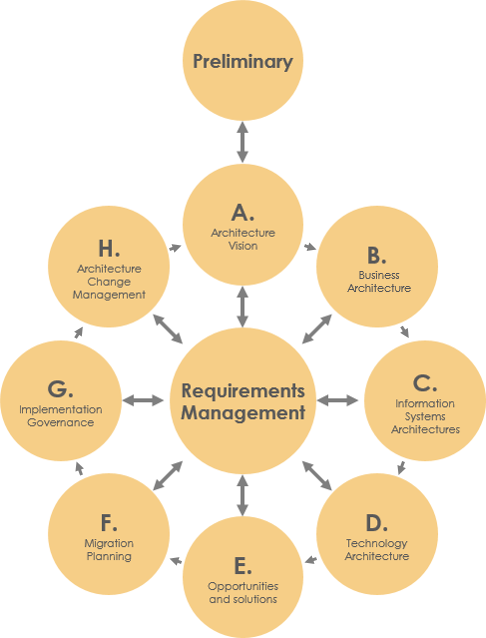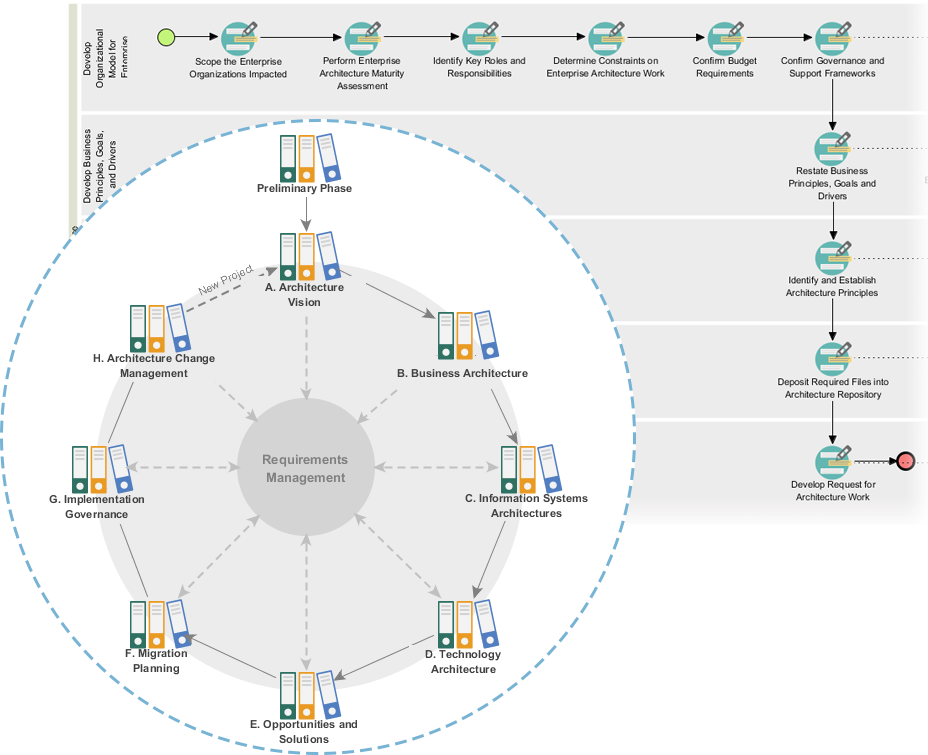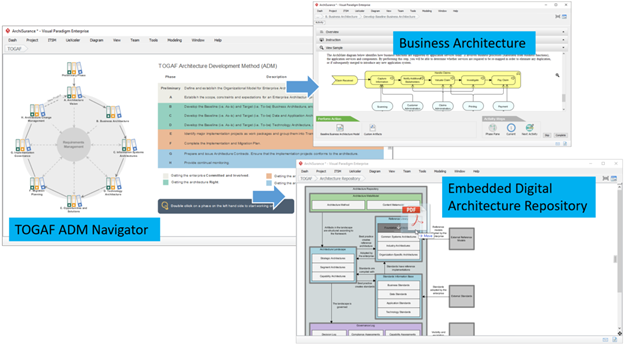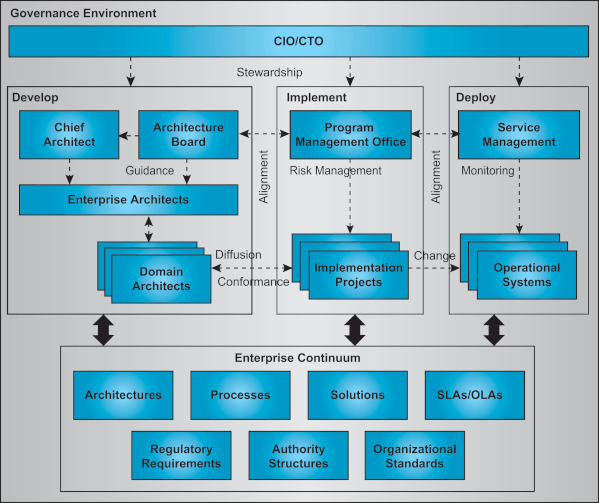Home » Archives for September 2023 » Page 2
Introduction In the ever-evolving landscape of business, both small startups and large enterprises are constantly juggling multiple projects, tasks, and teams. The cornerstone of successful project management lies in having the right tools at your disposal. Visual Paradigm, with its cutting-edge project management software, offers an unparalleled solution to streamline your projects and ensure they stay on the path to triumph. Project Management: A Necessity for Today's Businesses In the past, project management was often associated with nothing more than a pencil, a sheet of paper, and a methodology. However, times have changed,…
continue reading →
In today's fast-paced business landscape, successful organizations understand the critical need for Enterprise Architecture (EA). It's the key to transforming fragmented applications and processes, both manual and automated, into an integrated environment. This integration optimizes processes, allowing your organization to swiftly respond to change and achieve its business strategies. But unmanaged complexity in your IT landscape can lead to increased costs and reduced flexibility, characterized by a lack of standards, redundant applications, multiple platforms, and inconsistent data. Alignment between your business strategy and IT initiatives is more crucial than ever. Business transformation is…
continue reading →
Introduction In the ever-evolving landscape of modern businesses, enterprise architecture (EA) has become a crucial component for success. It's the blueprint that guides organizations toward their goals, aligning business and IT strategies seamlessly. However, embarking on an EA project can be a daunting task, fraught with challenges such as resource constraints, skills gaps, and alignment issues. This is where Visual Paradigm's TOGAF ADM Guide-Through Process comes to the rescue, streamlining the entire EA process and ensuring success from start to finish. The Challenge of Starting an EA Project Starting an EA project…
continue reading →
Introduction: Enterprise architecture is a vital discipline for organizations seeking to align their business strategies with technology solutions effectively. In this complex landscape, the TOGAF (The Open Group Architecture Framework) standard has emerged as a leading framework for guiding the creation and management of enterprise architectures. At its core, TOGAF offers the Architecture Development Method (ADM), a systematic approach that outlines how to develop and maintain enterprise architectures. Mastering TOGAF ADM is not just a theoretical pursuit; it's a practical skill that can enhance an architect's ability to design and manage complex systems.…
continue reading →
Introduction Governance, in its essence, serves as the compass that guides organizations toward proper conduct and sustainable success. While it is sometimes seen as a framework for control and rule adherence, it goes beyond that, encompassing principles that promote effective resource utilization and equitable treatment of stakeholders. In this article, we delve into the nature of governance, focusing on the principles outlined by the Organization for Economic Co-operation and Development (OECD) and exploring its role in steering organizations towards their strategic objectives. The Core Principles of Corporate Governance The OECD has laid out…
continue reading →
Introduction Governance plays a pivotal role in the management and operation of organizations, regardless of their size or sector. It provides a structured framework that guides decision-making, ensures transparency, and promotes accountability. In this article, we will delve into the essential characteristics of governance, highlighting their value and necessity in organizational settings. These characteristics, adapted from Naidoo (2002), form the bedrock upon which effective governance practices are built. Pillars of Effective Organizational Management Discipline One of the fundamental characteristics of governance is discipline. It emphasizes the importance of all involved parties committing to…
continue reading →
Overview In the ever-evolving landscape of modern business, effective architecture governance is paramount to ensure that enterprise architectures and other architectural frameworks are managed and controlled efficiently. To achieve this, organizations must establish well-defined organizational structures that support governance activities. The Architecture Governance Framework provides a blueprint for these structures, fostering the alignment of IT strategies with broader organizational goals. This article delves into the Architecture Governance Framework's organizational structure, emphasizing its significance in guiding architecture governance practices within an organization. The Key Elements of the Organizational Structure A robust architecture governance structure…
continue reading →
Introduction In today's rapidly evolving technological landscape, the effective management of architecture plays a pivotal role in an organization's success. The term "architecture governance" refers to the process of overseeing and managing architectural decisions and strategies within an enterprise. This article provides practical insights and guidelines for the implementation of architecture governance, emphasizing the key success factors and strategic elements necessary for its effectiveness. Key Success Factors for Architecture Governance To ensure a successful approach to architecture governance and the effective management of the Architecture Contract, several key success factors should be considered:…
continue reading →
Introduction In the ever-evolving world of enterprise architecture, it's crucial for organizations to have a structured approach to managing their architectural assets and processes. The Open Group Architecture Framework (TOGAF) offers a comprehensive framework that includes Architecture Development Method (ADM) and Architecture Governance, which together provide a robust foundation for managing and governing architectural endeavors. In this article, we will delve into the significance of Architecture Governance in TOGAF and how it ensures effective management and compliance throughout the architecture development process. Levels of Governance within the Enterprise: Understanding the Hierarchy In the…
continue reading →
Introduction Enterprise architecture plays a pivotal role in modern organizations, guiding strategic decision-making and ensuring alignment between business goals and IT systems. Within the context of TOGAF (The Open Group Architecture Framework), a structured approach is used to develop and manage enterprise architecture, known as the Architecture Development Method (ADM). This method outlines a comprehensive framework for architects to follow, resulting in the creation of various architectural work products. Among these, Architecture Deliverables and the Architecture Repository hold particular significance. In this article, we delve into the relationship between Architecture Deliverables and the…
continue reading →







